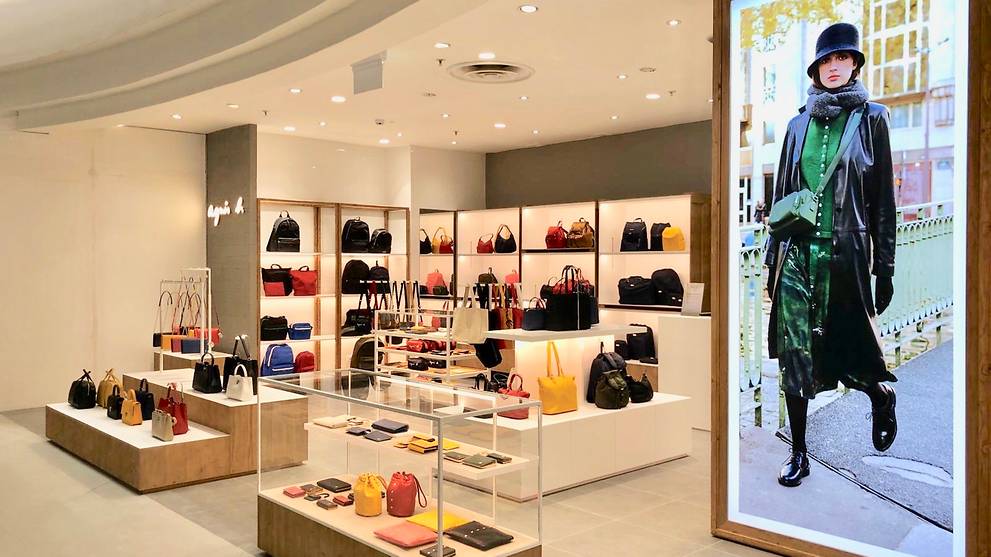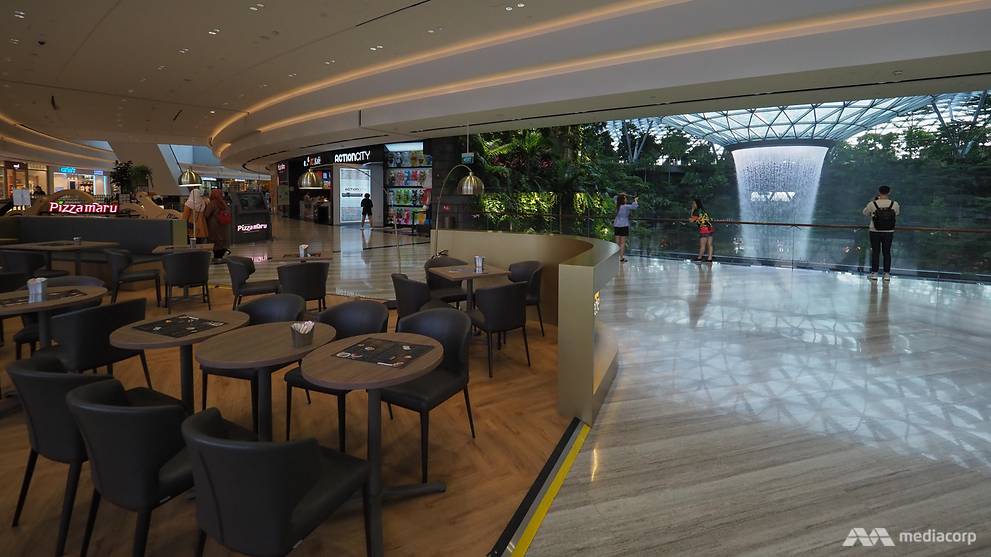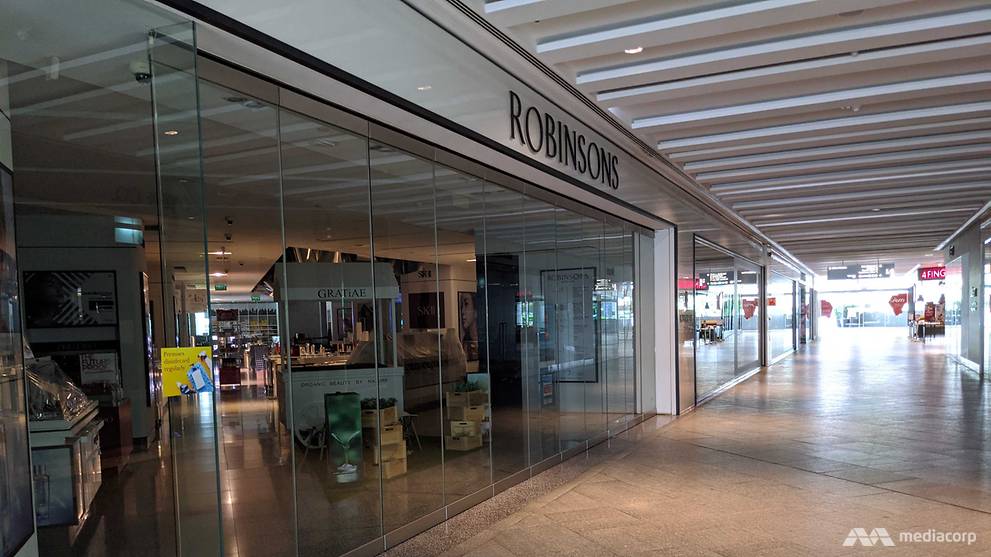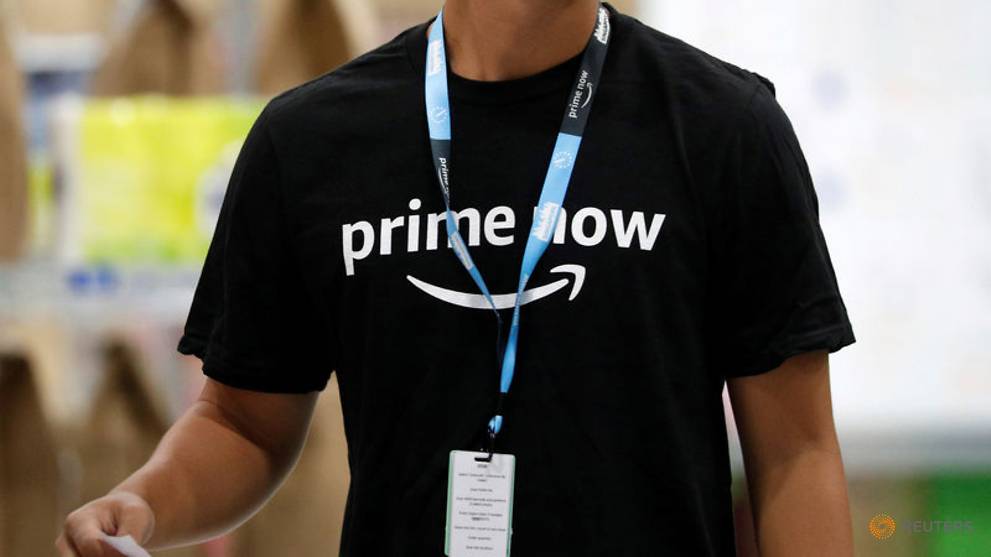
COVID-19: Retailers struggle amid uncertainties about reopening, recovery of sales
by Rachel PhuaSINGAPORE: John Ng was hoping to use 2020 to get his new company StyleLab off the ground. He had taken over the distribution rights to fashion label G-Star RAW last July from Sidefame, where he was previously the director and general manager, and successfully acquired the distribution rights for agnès b in the same month.
But then COVID-19 struck, putting a halt to any plans he had to build the business up and expand into Southeast Asia in the second half of this year. Currently, he has shops and counters at five locations in Singapore: Jewel Changi Airport, Paragon, Isetan Scotts, Robinsons The Heeren and Takashimaya Department Store.

Sales in February and March fell by 70 per cent, Mr Ng said, which meant that the business was already loss-making. During those months, travel restrictions were gradually introduced, and Singaporeans started to work from home.
Revenue has since dropped to zero after the “circuit breaker” kicked in on Apr 7 when most retailers were forced to shut their doors.
READ: Cocktail bar, Italian restaurant call it quits amid COVID-19 challenges for F&B sector
During the circuit breaker, Mr Ng has had to spend most of his time reassessing his balance book, trying to stem the bleeding caused by the COVID-19 pandemic.
The Jobs Support Scheme - which co-funded 75 per cent of local employees’ wages in April and May - as well as the foreign worker levy rebates have cushioned some of the manpower costs, while the possibility of getting four months of rental relief could buffer further losses, Mr Ng acknowledged.
However, the wage subsidies have only covered about half of his 24 employees’ wages so far, Mr Ng said, pointing out that he still has to contribute to their central provident funds.
And equally worrying, he said, is the question of when retailers can restart their business, as they can only open their stores in phase two of the post-circuit breaker timeline.
There is no certainty yet about when that might happen.
While Minister for National Development Lawrence Wong said on Thursday (May 28) that it could come as soon as the end of June, it would be conditional on community infection rates remaining low and stable.
“The key is income. There is no income right now, so everything is a cost,” said Mr Ng, who has taken out a temporary bridging loan to to cover his bank obligations and employees’ salaries.

“How long more (can we last)? Certainly not very long,” Mr Ng said. “We were thinking even just this month or next month, to start cutting staff or even scale the business down and close some outlets.”
“Besides the cost, how can we justify to our investors that we continue to pay salaries when there is no income? And not one month, not two months, but three months (at least),” he stressed.
READ: Businesses call for fair tenancy law to solve ‘growing’ imbalance in landlord-tenant relationship amid COVID-19 outbreak
RETAIL SECTOR HURTING
Throughout Singapore, the retail scene has been reeling from the economic impact of COVID-19 and the health precautions put in place to mitigate the virus’ spread.
Even before the circuit breaker, the retail industry saw its biggest drop in sales in 22 years in March, falling by 13.3 per cent. Sales of apparels and footwear tumbled by 41.6 per cent year-on-year.

Some high-profile store closures include Hong Kong-based fashion chain Esprit, which announced in April it was shutting 12 stores here, while Robinsons Singapore said it will close its Jem outlet in August.
The situation could deteriorate further. KPMG economist Paul Kent said that Singapore is likely to continue seeing a significant drop in retail sales, since the country had effectively shut its malls and non-essential services from the second week of April.
READ: Singapore will enter a recession this year, ‘significant uncertainty’ over duration and intensity: MAS
“This coupled with the cautious spending by consumers in light of the uncertainty, means that we will likely see a continuation of the negative trajectory,” he said.
With cut backs on retail spending, Mr Kent said about 90,000 to 100,000 jobs could be affected - some could be laid off, but others restructured - and 120,000 to 150,000 if the wider retail supply chain is taken into consideration.
READ: Retrenchments and withdrawn job offers: Singapore's labour market shows signs of COVID-19 strain
Plummeting retail sales could have wider implications on the economy. He noted the the Monetary Authority of Singapore’s report in April which highlighted that around 60 per cent of consumer spending has been impacted by the circuit breaker measures.
“If you consider travel restrictions and the lack of foreign visitor spending, a 60 per cent drop in final demand of retail spending could cause an impact on the GDP of around -1 per cent to -2 per cent,” Mr Kent said.
OUTLOOK REMAINS BLEAK AFTER SHOPS REOPEN
Even as the industry eventually sputters back to life, retailers said that reopening their stores may not bring an end to their woes.
Travel restrictions are still likely to be in place, meaning there will still be a lack of tourists.
Mr Ng said this group of spenders accounts for 50 to 60 per cent of total sales. The current economic fallout also suggests fewer dollars coming from domestic customers.
By the time they open, current stocks will possibly be a season behind too, said Mr Ng.
Similarly, Rainforest Design’s co-founder Sharon Kong said she has about S$100,000 to S$200,000 worth of spring/summer inventory that she has been unable to sell.
She is unsure whether next season’s collections will come in given supply chain disruptions globally.
The 22-year old company, which has several counters at Takashimaya selling luxury fashion items from brands such as Naracamicie and Swany, had already seen revenue decline by 75 to 80 percent in February and March, before it hit zero during the circuit breaker.
Sales on their e-commerce store is negligible, Ms Kong said, as hardly any customers order through it.

“We were really looking forward to opening on June 2,” she said.
But she acknowledged that sales might not pick up much after restrictions are eased.
“We sell discretionary goods. A pair of pants is a pair of pants, you don’t need a new one when the economy is bad.”
Samuel Tan, the course chair of Temasek Polytechnic’s diploma in retail management, said that expecting the industry to recover within 2020 itself might be too optimistic as consumers will be cautious with opening up their wallets even after the circuit break ends.
READ: Singapore to exit circuit breaker on Jun 1, visiting of parents, places of worship allowed with restrictions
READ: Transition to a 'new normal' after circuit breaker: How will measures be lifted beyond Phase 1?
A good indicator whether the sector has recovered would be to study the year-end festive season, when spending is higher than normal, Mr Tan said.
Retailers could also find attracting investments difficult during this period of economic uncertainty, Mr Kent said, which will present longer-term business challenges among business owners.
MOVE TO E-COMMERCE
One suggestion observers have made is to start selling goods online to steer the business through the pandemic, and to ride the rising e-commerce wave at the same time.
“(Retailers) should then take advantage of this current downtime, undergo short courses on e-commerce, and work with suitable partners to roll out their e-commerce business,” said Megan Ong, the director of Nanyang Polytechnic’s Singapore Institute of Retail Studies.
Aside from subsidised training courses, the Government recently launched an 'E-Commerce Booster Package' under Enterprise Singapore (ESG) to help retailers go online, subsiding 90 per cent of costs - capped at S$9,000 - to set up on e-commerce platforms like Amazon and Shopee.
ESG will also pay for 90 per cent of manpower costs for three months under the initiative.
On Tuesday, the Government also announced its S$500 million plan to spur businesses to adopt digital tools amid COVID-19.
Part of the slew of financial incentives include a grant of up to S$10,000 if the firm incorporates things like data analytics softwares and e-commerce platforms.
Despite the concessions, retailers say pivoting online is not just about how much the new setup will cost.
Mr Ng said that he has to first negotiate with the brands he represents for rights to sell their goods online in Singapore.
One of his brands, agnès b, is also already sold separately on Zalora, an online marketplace for fashion products.
Getting collaterals like photos and copy material could take weeks, especially if studio shoots are considered non-essential right now, he said.
Ms Kong added that going online is “a whole other set of investments”. Even with money from the government, labour to run an online channel in the long-term does not come cheap.
READ: Q1 labour market figures better than expected, but real storm is still ahead, economists say
Online consumers also play by a different set of rules, Ms Kong added, like wanting their products delivered almost immediately.
There will be data processing systems to create, logistical channels to revise, and another category of inventory to manage, which she is not sure her small firm of 15 people can handle.
READ: Commentary: Has COVID-19 made e-commerce and online shopping the new normal?
Lucas Tok, a marketing lecturer at Singapore Polytechnic, agreed with the retailers’ sentiments, adding that it can be hard to understand what vendors offer to them if they set up their own site, or which site suits them best if they went onto a marketplace platform.

Other questions merchants might ask is why would they want to invest in something which has a risk involved, or they may need two months to finally get familiar with - by which time their store’s business may be back to normal, he pointed out.
With everyone, including larger retailers, trying to take their business online, it has also become harder to grab the customer’s attention online, said Wang Xiaofeng, a senior analyst at market researcher Forrester.
Supply chains and delivery resources have run thinner during the pandemic too, Ms Wang said.
However, the analysts said that with the entire retail landscape shifting online - online sales encompassed 8.5 per cent of retail trade in March 2020, compared to 5.3 per cent a year ago - going digital is the only means of survival, during and after this pandemic.
Home and office goods supplier Abigco began listing on e-commerce site Lazada this April in order to expand its online presence.
It had its own website since 2014, but knowing more people were going onto better-known online marketplaces to get their essentials, applied for the booster package and hopped onto the platform.
So far, sales on Lazada have contributed twice as much as their own platform between late-April and early-May, said Kitson Leong, Abigco's director.
Mr Leong said the company's original strategy was to operate solely on their website so that it gives them more control over their marketing and branding, but having seen traffic numbers jump, might continue to list on Lazada in the long-run.
Lazada Singapore's chief executive James Chang said it has seen more than 4,500 businesses and entrepreneurs signed up as new sellers on Lazada in April, four times its usual average monthly sign-ups.
To help local retailers during this period, his company has been holding online shopping events - like a virtual tech show in March after the physical IT Show was postponed - and plans to keep holding similar campaigns in the coming months, Mr Chang said.

On the consumers' end, Temasek Polytechnic’s Mr Tan said that the circuit breaker has created many online shopping converts who are now “assured by the positive shopping experience".
"Online buying is here to stay," he said, and the only way for retailers to stay afloat is to cater to their customers' new habits.
More than just going digital, retailers will have to look at new business models like a “click-and-collect” strategy or contactless delivery as well, as consumers are likely to be more wary of crowds and public spaces during this time, said Mr Kent.
One retailer that managed to modify her business model quickly is Fatimah Mohsin.
The owner of a bridal gallery and home decor shop said she spent her time in April revamping her online boutique store.
When May arrived, she began to promote her products to her 50,000-odd Instagram followers and conducting free virtual home decor classes ahead of Hari Raya Puasa.
“After they announced the circuit breaker in April, I felt horrible,” Ms Mohsin said. “I was so afraid my cash flow will deplete in three to four months.”
“So I asked myself, what can I do if this goes on?”

Ms Mohsin’s online store has since raked in 700 per cent more in sales in May so far compared to the whole of April.
However, she said she has only managed to break even since the circuit breaker started, since she still has May’s rent to pay for - her Arab Street shophouse lease costs a “five-figure sum” every month - and her bridal studio income has dropped to zero.
Still, focusing on her online boutique is the only way forward, she believes.
“I think (the current shopping trend) is the new norm,” Ms Moshin said. “I can’t just wait around for things to go back to what it used to be. I have to keep trying new ideas.”
BOOKMARK THIS: Our comprehensive coverage of the coronavirus outbreak and its developments
Download our app or subscribe to our Telegram channel for the latest updates on the coronavirus outbreak: https://cna.asia/telegram